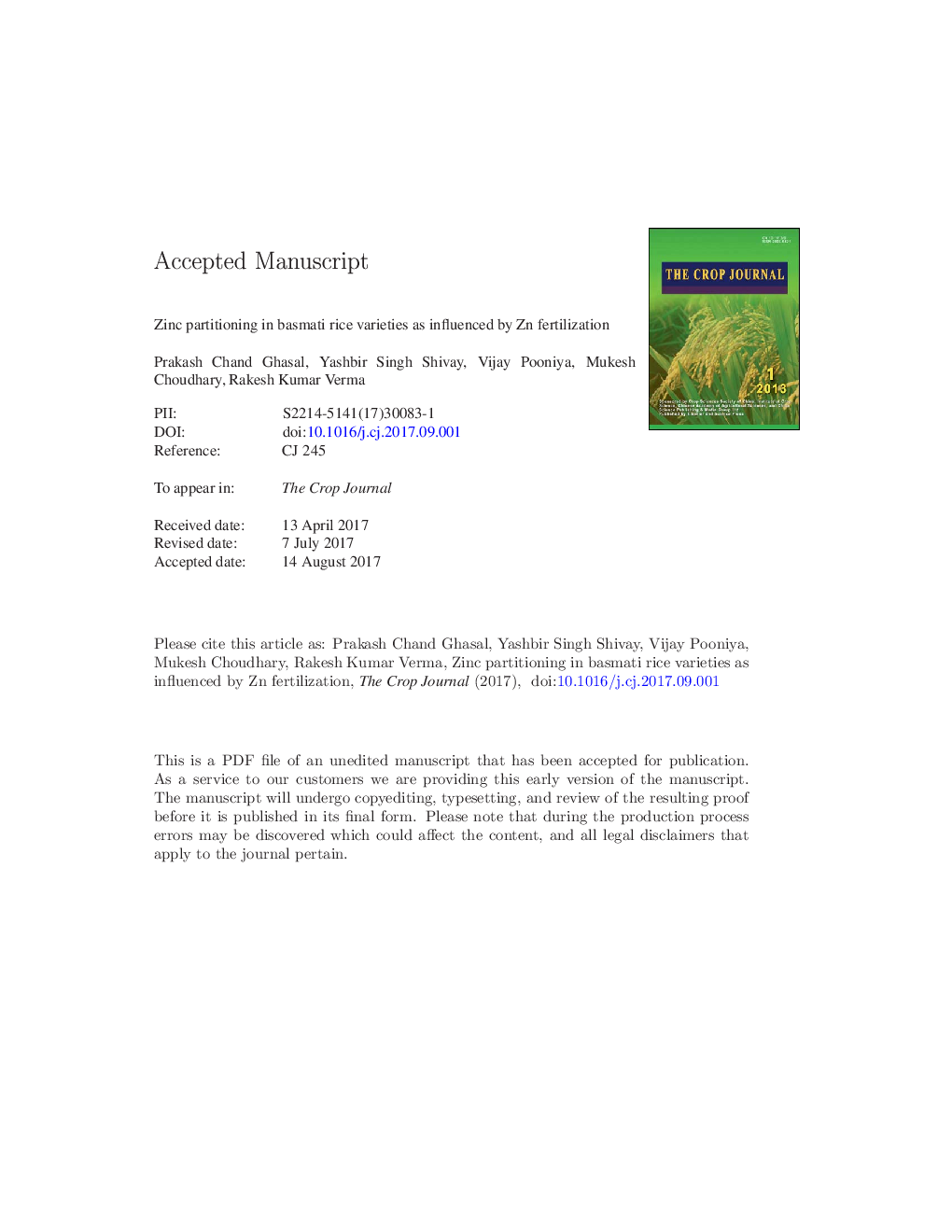| Article ID | Journal | Published Year | Pages | File Type |
|---|---|---|---|---|
| 8408751 | The Crop Journal | 2018 | 18 Pages |
Abstract
Zinc (Zn) ferti-fortification using different sources and methods in Zn deficient soils is being advocated to increase Zn concentration in rice kernel as an alternative to pursuing greater Zn-use efficiency (ZnUE). A two-year field study was conducted to assess the effect of Zn application on Zn content and uptake at several growth stages and in several parts of the rice kernel: hull, bran, and the white rice kernel. Variety 'PB 1509' with 1.25 kg Zn haâ 1 as Zn-EDTA + 0.5% foliar spray (FS) at maximum tillering (MT) and panicle initiation (PI) stages registered the highest Zn content in hull, bran, and white rice kernel. Among parts of the rice kernel, Zn concentration decreased in the order hull > bran > white rice kernel, indicating that brown rice kernels are much denser in Zn content than polished rice. Considering the higher Zn accumulation in the bran, brown rice consumption, especially in Asia and Africa, could be recommended to overcome Zn malnutrition. The variety 'PB 1401' showed the highest Zn uptake in rice straw, while 'PB 1509' showed the highest Zn uptake in hull and white rice kernel. Application of 1.25 kg Zn haâ 1 (Zn-EDTA) + 0.5% FS at MT and PI and 2.5 kg Zn haâ 1 ZnSO4·7H2O (ZnSHH) + 0.5% FS at MT and PI resulted in higher Zn uptake than other treatments. On average, about one third of total Zn uptake remained in the white rice kernel, with the remaining two thirds accumulating in both hull and bran of brown rice. Zn-EDTA along with 0.5% FS, despite the application of a lower quantity of Zn leading to the highest Zn mobilization efficiency index (ZnMEI) and Zn-induced nitrogen recovery efficiency (ZniNRE), produced the highest kernel yield. However, of the two Zn sources, Zn-EDTA contributed more to the increase in ZnUE than did ZnSHH.
Keywords
Related Topics
Life Sciences
Agricultural and Biological Sciences
Agronomy and Crop Science
Authors
Prakash Chand Ghasal, Yashbir Singh Shivay, Vijay Pooniya, Mukesh Choudhary, Rakesh Kumar Verma,
